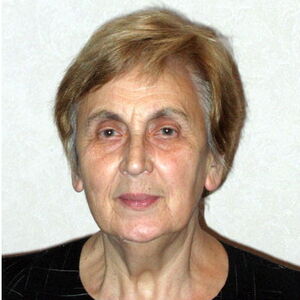Диссертация (1139765), страница 14
Текст из файла (страница 14)
Circadian Disruption in Psychiatric Disorders. SleepMedClin. 2015; 10(4): 481-93.87.Juha L., JVerbeek J., Ruotsalainen J. Pharmacological Interventions forSleepiness and Sleep Disturbances Caused by Shift Work. JAMA. 2015; 313(9): 961962.88.Kantermann T., Sung H., Burgess H.J. Comparing the Morningness-Eveningness Questionnaire and Munich ChronoType Questionnaire to the Dim LightMelatonin Onset. J Biol Rhythms. 2015; 30(5): 449-53.89.Keating G.M. Tasimelteon: A Review in Non-24-Hour Sleep-WakeDisorder in Totally Blind Individuals.
CNS Drugs. 2016; 30(5): 461-8.9190.Keller M. B., Shapiro R. W., Lavori P. W., Wolfe N. Relapse in majordepressive disorder. Analysis with the life table. Archives of General Psychiatry.1982; 39(8): 911–915.91.Keller K.L., Zöschg S., Grünewald B. Chronotype and depression inadolescents – a review. Kinder Z Jugendpsychiatr Psychother. 2016; 44 (2):113-26.92.Knowles J.B., Cairns J., McLean A.W. et al. The sleep of remittedbipolar depressives: comparison with sex and age-matched controls.
Can J Psychiat.1986; 31: 295-298.93.Lee H.-J., Son G.-H., Geum D. Circadian Rhythm Hypotheses of MixedFeatures, Antidepressant Treatment Resistance, and Manic Switching in BipolarDisorder. Psychiatry Investig. 2013; 10(3):225-32.94.Lemoine P, Nir T, Laudon M, Zisapel N. Prolonged-release melatoninimproves sleep quality and morning alertness in insomnia patients aged 55 years andolder and has no withdrawal effects.
J Sleep Res. 2007; 16: 372-80.95.Malkoff-Schwartz S., Frank E., Anderson B et al. Stressful life eventsand social rhythm disruption in the onset of manic and depressive bipolar episode.Arch Gen Psychiat. 1998; 55: 102-1.96.Malonea S.K., Pattersonb F., Lua Y., Lozanoa A., Hanlon A. Ethnicdifferences in sleep duration and morning–evening type in a population sample.Chronobiol Int. 2016; 33(1):10-21.97.McCall W.V., Reboussin B.A., Cohen W. Subjective measurement ofinsomnia and quality of life in depressed inpatients. J Sleep Res.
2000; 9:43-8.98.McCarthy MJ, Welsh DK. Cellular circadian clocks in mood disorders. JBiolRhythm. 2012; 27: 339-352.99.McClung C.A. How Might Circadian Rhythms Control Mood? Let MeCount the Ways. Biol Psychiatry. 2013; 74:242-249.100. Melo M.C.A., Abreu R.L.C., Linhares Neto V.B et al. Chronotype andcircadian rhythm in bipolar disorder: A systematic review. Sleep Med Rev. 2017; 34:46-58.92101.
Merikanto I., Suvisaari J., Lahti T., Partonen T. Eveningness relates toburnout and seasonal sleep and mood problems among young adults. Nord JPsychiatry. 2016; 70(1): 72-80.102. Monteleone P., Maj M. The circadian basis of mood disorders: Recentdevelopments and treatment implications. Eur Neuropsychopharmacology.
2008; 18:701-11.103. Montgomery S.A., Asberg M. A new depression scale designed to besensitive to change. Br Psychiatry. 1979; 134: 382-389.104. Montgomery S., Roy D., Montgomery D. The prevention of recurrentsuicidal acts. Br J Clin Pharmacol. 1983; 15: 183-188.105. Müller M.J., Cabanel N., Olschinski C. et al. Chronotypes in patientswith nonseasonal depressive disorder: Distribution, stability and association withclinical variables. Chronobiol Int.
2015; 32(10): 1343-51.106. Nagayama H. Chronic administration of imipramine and lithium changesthe phase-angle relationship between the activity and core body tempera-turecircadian rhythms in rats. Chronobiol Int. 1996; 13: 251-9.107. Nickelsen T., Samel A., Vejvoda M., Wenzel J., Smith B., Gerzer R.Chronobiotic effects of the melatonin agonist LY 156735 following a simulated 9htime shift: results of a placebo-controlled trial. Chronobiol Int. 2002; 19: 915-36.108. Ohayon M., Roth T. Place of chronic insomnia in the course ofdepressiveand anxiety disorders.
J Psychiat Res. 2003; 9-15.109. Ohayon M.M., Shapiro C.M. Sleep disturbances and psychiatricdisordersassociatedwithposttraumaticstressdisorderinthegeneralpopulation.Compr Psychiat. 2000; 41: 469-478.110. Paizanis E., Renoir T., Lelievre V. et al. Behavioural and neuroplasticeffects of the new-generation antidepressant agomelatine compared to fluoxetine inglucocorticoid receptor-impaired mice. Int J Neuropsychopharmacol. 2010; 13: 75974.93111. Pandi-Perumal S.R., Trakht I., Srinivasan V., Spence D.W., MaestroniG.J., Zisapel N., Cardinali D.P. Physiological effects of melatonin: role of melatoninreceptors and signal transduction pathways. Prog Neurobiol. 2008; 85(3): 335-53.112.
Papousek M. Chronobiologishe aspekte der zyklothymie. Fortsch.Neurol.Psychiatre, 1975; 43: 381-440.113. Partonen T., Reutlein J., Alpman A. et al. Three circadian clock genesPer2,Arntl, and Npas2 contribute to winter depression. Ann Med. 2005; 39: 229-238.114. Paunio T., Korhonen T., Hublin C., Partinen M., Koskenvuo K.,Koskenvuo M., Kaprio J.
Poor sleep predicts symptoms of depression and disabilityretirement due to depression. J Affect Disord. 2014; 172: 381-389.115. Pfeffer M., Korf H.W., Wicht H. Synchronizing effects of melatonin ondiurnal and circadian rhythms. Gen Comp Endocrinol. 2017 May 19.
pii: S00166480(17)30172-7.116. Pringle A., Bogdanovskaya M., Waskett P., Zacharia S., Cowen P.J.,Harmer C.J.J. Does melatonin treatment change emotional processing? Implicationsfor understanding the antidepressant mechanism of agomelatine. Psychopharmacol.2015; 29(10): 1129-32.117. Rahafar A., Maghsudloo M., Farhangnia S. et al. The role of chronotype,gender, test anxiety, and conscientiousness in academic achievement of high schoolstudents. Chronobiol Int. 2016; 33(1): 1-9.118.
Randler C. Ontogeny of morningness-eveningness across the adulthuman lifespan. Naturwissenschaften. 2016; 103(1-2): 3.119. Randler C., Freyth-Weber K., Rahafar A. et al. Morningnesseveningness in a large sample of German adolescents and adults. Heliyon. 2016;2(11):e00200.120. Roenneberg T. Chronobiology: The human sleep project. Nature. 2013;498(7455): 427-8.121. Roenneberg T., Wirz-Justice A., Merrow M. Life between clocks: dailytemporal patterns of human chronotypes. J Biol Rhythms. 2003; 1 (18): 80-90.94122.
Rosenthal N.E., Genhart M., Sack D.A., Skwerer R.G., Wehr T.A.Seasonal affective disorder and its relevance for the understanding and treatment ofbulimia. In: Hudson JJ, Pope Jr HG (eds). The Psychology of Bulimia. AmericanPsychiatric Press: Washington, DC; 1987.123. Rumble M.E., White K.H., Benca R.M. Sleep Disturbances in MoodDisorders. Psychiatr Clin North Am. 2015; 38(4): 743-59.124. Rush A.J., Armitage R., Gillin J.C. et al.
Comparative effects ofnefazodone and fluoxetine on sleep in outpatients with major depressive disorder.Biol Psychiat. 1998; 44: 3-14.125. Schulz H., Lund R. Sleep onset REM episodes are associated withcircadian parameters of body temperature: A study of depressed patients and normalcontrols. Biol Psychiat.
1983; 18: 1411-26.126. Shapero B.G., Weiss R.B., Burke T.A. et al. Kindling of Life Stress inBipolar Disorder: Effects of Early Adversity. Behav Ther. 2017; 48(3): 322-334.127. Sheaves B., Porcheret K., Tsanas A. et al. Insomnia, Nightmares, andChronotype as Markers of Risk for Severe Mental Illness: Results from a StudentPopulation. Sleep. 2016; 39 (1):173-81.128. Smith C.S., Reilly C., Midkiff K.
Evaluation of three circadian rhythmquestionnaires with suggestions for an improved measure of morningness. J ApplPsychol. 1989; 74(5): 728-38.129. Solt L.A., Wang Y., Banerjee S. et al. Regulation of circadian behaviourand metabolism by synthetic REV-ERB agonists. Nature. 2012; 485(7396):62-8.130. Solomon A. The relation of time estimation to personality traits. Thesis.Lexington: University of Kentucky, 1950.131.
Sriwattanakomen R., McPherron J., Chatman J., Morse J.Q., MartireL.M. , Karp J.F., Houck P.R., Bensasi S., Houle J., Stack J.A. , Woods M., Block B.,Thomas S.B., Quinn S., Reynolds C.F. 3rd. A comparison of the frequencies of riskfactors for depression in older black and white participants in a study of indicatedprevention. Int Psychogeriatr. 2010; 22(8):1240-7.95132. Stahl S. М. Essential psychopharmacology. Neuroscientific bаsis andclinical applications. CD-ROM. Cambridge: University Press and its licensors: 1998.133. Steriade M., McCarley R.
REM sleep as a biological rhythm. In: SteriadeM& McCarley R, eds. Brainstem control of wakefulness and sleep. New York:Plenum Press 1990; 363-393.134. Stetler C, Dickerson SS, Miller GE. Uncoupling of social zeitgebers anddiurnal Cortisol secretion in clinical depression. Psychoneuroendocrinol 2004; 29:1250-9.135.
Summa K.C., Turek F.W. The Clocks within Us Scientific American.Nature. 2015; 312: 50-55.136. Tan T.L., Kales J.D., Kales A. et al. Biopsychobehavioral correlates ofinsomnia, IV:Diagnosis based on DSM-III. Am J Psychiatry 1984; 141:357-62.137. Taneja R., Hunter K., Burakgazi-Dalkilic E., Carran M. Effect of sleeppatterns on levetiracetam induced mood changes. Epilepsy Behav.
2017; 75: 237-240.138. Togo F, Yoshizaki T, Komatsu T. Association between depressivesymptoms and morningness-eveningness, sleep duration and rotating shift work inJapanese nurses. Chronobiology International. 2017:1-11.139. Wedegaertner F., Arnhold-Kerri S., Sittaro N.A. et al. Depression- andanxiety-related sick leave and the risk of permanent disability and mortality in theworking population in Germany: a cohort study. BMC Public Health 2013; 13: 1:145.140.
Wetterberg L. Clinical importance of melatonin. Prog Brain Res 1979;52: 539-547.141. Weyerer S, Eifflaender-Gorfer S, Köhler L. et al. Prevalence and riskfactors for depression in non-demented primary care attenders aged 75 years andolder J Affect Disord. 2008; 111(2-3):153-63.142. WHO Guide to Mental and Neurological Health in Primary Care. WorldHealth Organization / Ed. Rachel Jenkins.
2004: 305.143. Wilson S., Argyropoulos S. Antidepressants and sleep. A qualitativereview of the literature. Drugs 2005; 65: 927-947.96144. Winokur A., DeMartinis N.A., McNally D.P. et al. Comparative effectsof mirtazapine and fluoxetine on sleep physiology measures in patients with majordepression and insomnia. J Clin Psychiat 2003; 64: 1224-1229.145. Wirz-Justice A.
Biological rhythm disturbances in mood disorders.Internat Clin Psychopharmacol 2006; Suppl. 1: S11-5.146. Wirz-Justice A. Diurnal variation of depressive symptoms appears to bepart of the core of depression. Dialogues Clin Neurosci. 2008; 10(3): 337-43.147. Wirz-Justice A. Temporal organization as a therapeutic target.
















